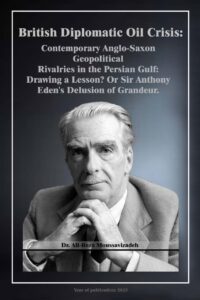The British Imperial Establishment, Post Imperial Era, and the ‘Churchillian’ World View, 1945-2016. (Adjustments & Challenges in Contemporary British Diplomatic Strategy)
146
Kenya
African Union, which was the principal African political organisation, was
banned and Jomo Kenyatta was
sentenced to ten years’ impisonment for his part
in the leadership of the revolt.
During the period that Oliver Lyttelton was colonial Secretary, in 1954,
provision was made for
African and Asians (Asian settlers in Kenya) to be
appointed as minister. In 1956, when Alan Lennox-Boyd
was colonial Secretary.
announcement came that African members would be elected to the
Kenyan
Legislative Council. African representation was doubled in 1958 in response to
the demands of
a future Minister of Justice, Tom Mboya, and his supporters. It
was increased again in 1960. In 1960 and
1961 deliberations in London, under
the guidance of Iain MacLeod, the then Colonial Secretary, resulted
in the
introduction of a constitution which allowed the Africans of Kenya to dominate
future
elections to the Legislative Council. At the same time it had been agreed
that more educational
facilities, homes, Highland villages and light industries
should be made available for the native
Kenyans. This added to the scheme,
inaugurated in 1954, under which the native farmers of Kenya were
being
encouraged to exchange scattered holdings for compact fenced farms, on which
they could keep
their animals and experiment with new crops and modern
methods.
However, as Kenya was a racially mixed society, there were substantial
problems as a result of all
these reforms. There was strong resentment among the
Europeans because they saw these developments as
threats to their best educated
and most enterprising minority, although a major effort took place by the
British
to bring about racial co-operation in Kenya. There were also problems among the
African
Kenyans themselves. Divided into a National Union, representing the
strongest tribes (Kikuyo and Luo) and
a Democratic Union of the minor tribes,
seeking respectively unitary government and federation for Kenya,
they were
faced for a time with the fragmentation of their country on the eve of
Pages: 1 2 3 4 5 6 7 8 9 10 11 12 13 14 15 16 17 18 19 20 21 22 23 24 25 26 27 28 29 30 31 32 33 34 35 36 37 38 39 40 41 42 43 44 45 46 47 48 49 50 51 52 53 54 55 56 57 58 59 60 61 62 63 64 65 66 67 68 69 70 71 72 73 74 75 76 77 78 79 80 81 82 83 84 85 86 87 88 89 90 91 92 93 94 95 96 97 98 99 100 101 102 103 104 105 106 107 108 109 110 111 112 113 114 115 116 117 118 119 120 121 122 123 124 125 126 127 128 129 130 131 132 133 134 135 136 137 138 139 140 141 142 143 144 145 146 147 148 149 150 151 152 153 154 155 156 157 158 159 160 161 162 163 164 165 166 167 168 169 170 171 172 173 174 175 176 177 178 179 180 181 182 183 184 185 186 187 188 189 190 191 192 193 194 195 196 197 198 199 200 201 202 203 204 205 206 207 208 209 210 211 212 213

